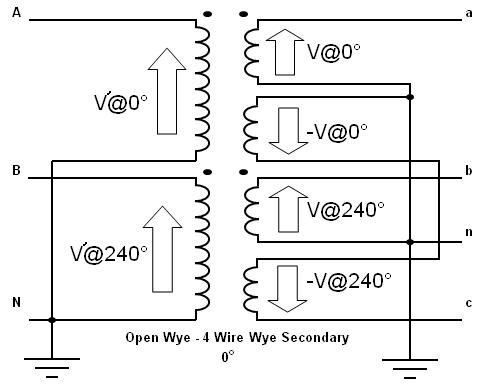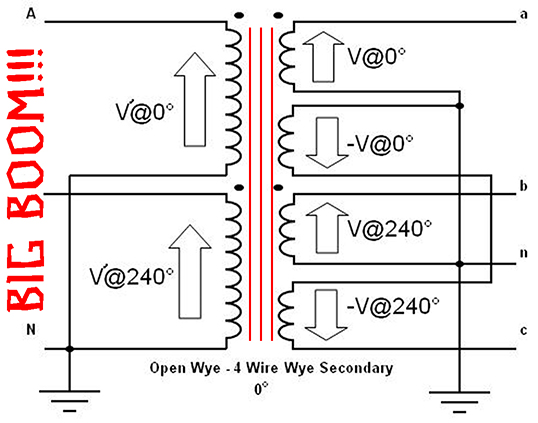mivey
Senior Member
As I have said before, I am looking at the voltage waveforms and their relationships with each other. How they are derived/created/etc is a different issue. The nature of a collection of voltages is what is usually called into question. The questions usually are centered around a question that asks why does a set of voltages look like and exhibit the behavior of one thing but is then called something else.If you want to represent this as real-world, then you are stuck with a common-core transformer and you can no longer interject your phase shift and minus sign.
Where the voltages come from is of interest for some other application issues, but it has little bearing on how we label a collection of voltage sources in the general case. Yes, that is what I said, even for most of our applications the voltages are usually independent enough for what we are doing to consider them as individual sources.
Anyway, the core is no restriction on shifts and signs. We have a real world application where we take a two-phase system of voltages and use two fluxes through two transformer cores to produce a three-phase system of voltages (Scott connections). Again, the method of creation is not the focus but rather the voltage waveforms and their relationships to each other.
An Open-Wye Open-Delta real world bank also uses two cores to convert from a system of two phase-displaced voltages to three phase-displaced voltages.
Another real world application is the Open-Wye to 4-wire Wye connection. It uses two cores but takes advantage of the center-tap and the real world fact that the negative signs are also physical realities. It uses these real world minus signs to create a real world set of three phase-displaced voltages.
I have a power supply on my workbench right now that could have used a center-tapped transformer. At the time I built it, I did not have the transformer I needed on hand so I used two individual transformers instead of just one. The fact that I used two cores does not mean that the single core application was not real. The reverse is also true: Had I used one core, it would not mean the case of using two cores was not a real-world application.
So, these are not just hypotheticals but physical realities. Whether or not we are actually using them at this very moment does not mean they fall into the world of fantasy.
There is no misleading intended. I have said it is perfectly fine for someone to memorize the list of names we use. I am not on a campaign to change those names either. But, for those that want to move beyond just memorizing a list of specific conventional system names, I am only trying to help them get a better understanding of the systems from the standpoint of the general case. I think I have been more than up-front about my intentions.The people you are misleading in these threads have the right to know that you are not referring to real-world applications.
If the systems under discussion can be built then they are real. These are not some kind of Escher drawing or some kind of illusion. They are not some theory that looks good but can't really be proved. Even if you have not personally put your hand on one, they are physical realities.
I have tried to make that point many times. For the purposes of identifying a system of voltages, I am not concerned with where they came from because as long as they are voltage sources (which they essentially are), the only real issue is the relationships they have with each other.I didn't notice this at the time of my previous posting, but nevertheless this is what should be strongly pointed out to those reading this thread.
Not true. See above.The whole basis of this discussion is that you are dealing with non-real-world applications with isolated secondaries and isolated primaries. If either one of which is linked, then you can no longer interject your time shift.
Last edited:




